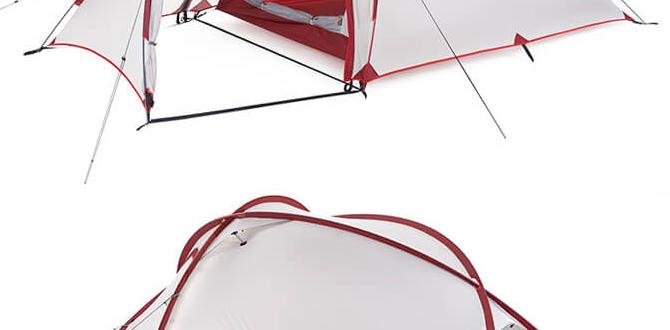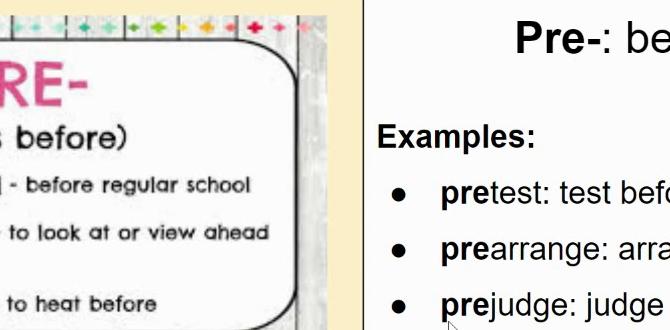Ready to grow fresh herbs? Setting up an herb garden kit is simple and essential for budding gardeners! Learn how to pick the right kit, prepare your space, and plant your way to a thriving home herb garden, whether indoors or out. Get ready for delicious, homegrown flavor!
Herb Garden Kit Setup: Genius & Essential for Flavorful Living
Ever dreamt of plucking fresh basil for your pasta or mint for your tea right from your kitchen counter or patio? It sounds wonderful, but getting started can feel a bit overwhelming. Many beginners find themselves unsure of where to begin, maybe even frustrated by past attempts that didn’t quite take off. Don’t worry! Setting up an herb garden kit is more straightforward than you think, and it’s an incredibly rewarding way to bring fresh flavors and lovely scents into your home. We’ll guide you through every simple step, from choosing the perfect kit to nurturing your little green friends. Get ready to transform your space into a mini herb haven!
Why an Herb Garden Kit is a Smart Start
For anyone dipping their toes into the world of gardening, an herb garden kit is a game-changer. Think of it as a curated starter pack for your green thumb journey. These kits remove a lot of the guesswork, providing you with nearly everything you need to succeed from day one. It’s an efficient and encouraging way to learn the basics of plant care without feeling lost in a sea of options.
The Benefits of Starting with a Kit
- Simplicity: Kits are designed for ease of use, perfect for beginners.
- All-in-One Convenience: They often include seeds, soil, pots, and sometimes even basic instructions.
- Space-Saving Solutions: Many kits are designed for small spaces, making them ideal for apartments or balconies.
- High Success Rate: With the right components chosen for you, your chances of growing healthy herbs are much higher.
- Cost-Effective: Buying a kit can sometimes be more economical than sourcing individual components.
- Educational Value: They offer a hands-on learning experience in plant propagation and care.
Choosing Your Perfect Herb Garden Kit
The world of herb garden kits is vast, offering options for every space and preference. Whether you have a sunny windowsill or a spacious backyard, there’s a kit waiting for you. The key is to match the kit to your environment and the types of herbs you love to use.
Indoor vs. Outdoor Kits
This is your first big decision! Where will your herb garden live?
- Indoor Kits: These are perfect for small spaces, regardless of the season. They often come with compact containers, specialized soil, and sometimes even grow lights to ensure your herbs get enough sun. They are fantastic for apartment dwellers or those who want year-round access to fresh herbs.
- Outdoor Kits: Suited for gardens, patios, or balconies with ample natural sunlight. These might include larger containers, fencing for protection from pests, or a variety of seeds chosen for outdoor growing conditions.
What’s Inside a Typical Herb Garden Kit?
While kits vary, most will contain a combination of the following:
- Seeds: Pre-selected herb seeds, often chosen for ease of growth or compatibility.
- Growing Medium: This could be potting soil, coco coir, or rockwool cubes, designed to provide optimal drainage and aeration.
- Containers: Small pots, seed trays, or even fabric grow bags. Some might be biodegradable.
- Nutrients/Fertilizer: Though sometimes optional for beginners, some kits include slow-release fertilizer or liquid plant food.
- Instructions: Step-by-step guides tailored to the kit’s contents.
Popular Herbs Typically Found in Kits
Kits often focus on easy-to-grow, popular culinary herbs.
| Herb | Flavor Profile & Uses | Growing Tip |
|---|---|---|
| Basil | Sweet, peppery; essential for Italian dishes, pesto, and caprese salads. | Prefers warmth and plenty of sunlight. Pinch back regularly to encourage bushier growth. |
| Mint | Cool, refreshing; great for teas, cocktails, desserts, and sauces. | Can be invasive; best grown in its own pot, even outdoors. Thrives in moist soil. |
| Parsley | Fresh, slightly peppery; a versatile garnish and ingredient in many cuisines. | Needs consistent moisture and at least partial sun. Flat-leaf (Italian) parsley has a stronger flavor than curly parsley. |
| Chives | Mild onion flavor; perfect for eggs, potatoes, salads, and garnishes. | Easy to grow; prune to encourage new growth. Can be grown indoors or out. |
| Cilantro | Distinctive, citrusy flavor; key in Mexican, Thai, and Indian dishes. | Cilantro tends to bolt (go to seed) in heat, so it prefers cooler weather and partial shade. |
| Oregano | Pungent, earthy; a staple in Mediterranean and Mexican cooking. | Drought-tolerant once established; prefers well-drained soil and full sun. |
Pre-Setup Checklist: What You Might Need (Beyond the Kit)
While your kit aims to be comprehensive, a few extra items can make the setup process smoother and ensure your herbs get the best start.
Essential Tools for Success
- Watering Can or Spray Bottle: For gentle watering, especially for delicate seedlings. A small watering can with a fine spout is ideal. For indoor setups, a spray bottle often works well initially for misting.
- Gloves: To keep your hands clean and protect them from soil.
- Small Trowel or Spoon: For scooping soil and making planting holes, though your fingers often work just fine!
- Labels: Crucial for identifying your herbs, especially when they are seedlings and look similar. You can use popsicle sticks, small plastic markers, or even reusable chalkboard labels.
- A Sunny Spot (or Grow Light): Most herbs need at least 6 hours of sunlight per day. If you don’t have a sunny window, a small LED grow light can be a fantastic investment. The USDA’s growing guide for herbs offers excellent insights into light and other needs.
- Saucers or Trays: To catch excess water and protect your surfaces, especially for indoor containers.
Step-by-Step: Setting Up Your Herb Garden Kit
Let’s get planting! Follow these simple steps to bring your herb garden kit to life.
Step 1: Unpack and Inspect
Carefully open your kit. Lay out all the components and check them against the instructions. Ensure you have all the seeds, soil, pots, and any other promised items. If anything is missing or damaged, contact the kit manufacturer.
Step 2: Prepare Your Containers
If your kit includes pots, ensure they have drainage holes. If not, you may need to consider alternative containers or drainage solutions. For kits with biodegradable pots, you’ll plant them directly into the larger pot or ground later. If using trays, make sure they are clean.
Step 3: Add the Growing Medium
Fill your containers with the provided soil or growing medium. Don’t pack it down too tightly; you want it to be light and airy. Leave about an inch of space at the top of each container.
Step 4: Sow Your Seeds
This is the exciting part! Read your kit’s seed packet or instructions carefully. Typically, you’ll make a small indentation in the soil with your finger or a pencil, place 1-3 seeds in each hole, and gently cover them with about a quarter-inch of soil. Don’t overcrowd the pots; it’s better to thin them out later if too many sprout.
Pro Tip: If your kit has multiple types of seeds, label each container before you start sowing to avoid confusion!
Step 5: Water Gently
Once seeds are sown, water the soil lightly. A spray bottle is excellent for this, as it won’t disturb the tiny seeds. The soil should be moist but not waterlogged. Avoid letting water pool at the bottom of the containers.
Step 6: Provide the Right Environment
- Light: Place your containers in a location that receives the appropriate amount of light. For most herbs, this means at least 6 hours of bright, indirect sunlight daily. A south-facing window is often ideal for indoor gardens. If natural light is insufficient, set up your grow light, positioning it a few inches above the soil.
- Temperature: Most herbs prefer temperatures between 65-75°F (18-24°C). Avoid placing them near drafty windows or heating vents.
- Humidity: Some herbs, like basil, enjoy a bit more humidity. You can increase humidity by misting regularly or placing containers on a pebble tray filled with water.
Step 7: Patience and Observation
Now, the waiting game begins! Germination times vary depending on the herb. Some might sprout in a few days, while others can take a couple of weeks. Keep the soil consistently moist and continue to observe. You’ll see tiny green shoots pushing through the soil soon enough!
Caring for Your Seedlings
Once your herbs sprout, the real fun begins, but their needs shift slightly.
Watering Needs
As seedlings grow, they will require more water. Check the soil moisture daily by sticking your finger about an inch deep. If it feels dry, it’s time to water. Water thoroughly until you see a little drainage, then let the excess water escape. Overwatering is a common mistake, so ensuring good drainage is key.
Thinning Your Seedlings
If multiple seeds germinated in one spot, you’ll need to thin them out. This means gently removing the weaker seedlings, leaving only the strongest one or two per pot. This gives the remaining plants room to grow without competition for nutrients and light. You can gently pull them out or snip the weaker ones at the soil line with clean scissors.
Feeding (If Necessary)
Most herb garden kits provide enough nutrients in the initial soil for the young plants. However, once your seedlings develop their first set of “true leaves” (the second set of leaves that appear after the initial seed leaves), you might consider a very diluted liquid fertilizer, perhaps at half strength, once every 2-4 weeks. Always follow the fertilizer’s instructions and err on the side of caution with herbs, as too much fertilizer can affect their flavor.
Transplanting Your Herbs
As your herb seedlings grow larger and their roots start to fill the initial containers, they’ll need more space. This often happens after 4-6 weeks.
When to Transplant
Signs your herbs need a new home include:
- Roots are growing out of the drainage holes.
- Growth seems to have slowed significantly.
- The plant looks top-heavy or unstable.
Choosing Larger Pots or Garden Beds
Select pots that are at least two inches larger in diameter than their current ones. Ensure they have good drainage. For outdoor planting, choose a spot that gets plenty of sun and has well-draining soil. You can amend your garden soil with compost or other organic matter to improve drainage and fertility. The National Gardening Association offers great advice on creating well-drained garden soil.
The Transplanting Process
- Water thoroughly: Water the herb plant in its current container about an hour before transplanting. This helps the soil stay together around the roots.
- Prepare the new home: Fill the new pot or garden bed with appropriate potting mix or amended garden soil, leaving a space in the center large enough for the root ball.
- Gently remove the plant: Tip the current pot sideways and gently slide or coax the herb and its soil mass out. If it’s stuck, tap the bottom of the pot or run a knife around the edge. Avoid pulling the stem.
- Loosen roots (if necessary): If the roots are tightly wound (root-bound), gently tease apart the outer roots with your fingers. This encourages them to grow into the new soil.
- Place and backfill: Position the herb in the center of the new pot or hole. The top of the root ball should be level with the surrounding soil. Backfill with soil, pressing gently to remove large air pockets.
- Water well: Water the newly transplanted herb thoroughly to help settle the soil and reduce transplant shock.
Troubleshooting Common Herb Garden Issues
Even with the best kits, you might encounter a few hiccups. Here’s how to tackle them:
Wilting Leaves
This is often a sign of under-watering, but it can also be caused by over-watering (which leads to root rot). Check the soil moisture. If dry, water. If wet, allow the soil to dry out and ensure good drainage. Extreme heat can also cause wilting; try to provide some shade during the hottest part of the day.
Yellowing Leaves
Yellowing can mean a few things: too much water, not enough light, or a nutrient deficiency. Again, check watering habits and light exposure first. If those seem correct, a very mild, diluted fertilizer might help, but use sparingly.
Leggy Growth (Tall and Thin Stems)
This usually indicates that your herbs are not getting enough light. They are stretching to reach for more. Move them to a sunnier spot or consider using a grow light. Pinching back the tops can also encourage bushier growth.
Pests
Common indoor pests include aphids, spider mites, and fungus gnats. For mild infestations, try wiping leaves with a damp cloth, using insecticidal soap, or introducing beneficial insects. Ensure good air circulation, as this deters many pests. For more information on identifying and treating common garden pests, websites like the Royal Horticultural Society (RHS) offer extensive resources.
FAQ: Your Herb Garden Kit Questions Answered
Q1: How much sunlight do most herb garden kits need?
Most herb garden kits thrive with at least 6 hours of bright, indirect sunlight per day. South-facing windows are ideal for indoor gardens. If you don’t have enough natural light, consider using a grow light.
Q2: How often should I water my herbs from a kit?
Check the soil moisture daily by feeling about an inch below the surface. Water only when the soil feels dry. When you water, do so thoroughly until water drains from the bottom. Overwatering is a common cause of problems.
Q3: My seeds haven’t sprouted yet. What should I do?
Germination times vary greatly by herb type. Some sprout in a few days, while others can take 2-3 weeks. Ensure the soil stays consistently moist (but not soggy) and the temperature is suitable. Refer to your kit’s seed packet for expected germination times.
Q4: Can I plant herbs from a kit directly into my garden?
Yes, if you have an outdoor space and at least 6 hours of sun daily. Wait until seedlings are robust enough to transplant and ensure your garden soil is well-draining. Harden off your seedlings first by gradually exposing them to outdoor conditions for about a week before planting.
Q5: What does “pinching back” herbs mean, and why is it important?
“Pinching back” means snipping off the top few inches of a stem. This encourages the plant to grow more side shoots, resulting in a bushier, fuller plant rather than a tall, spindly one. It also helps prevent flowering, which can sometimes reduce leaf production and flavor.
Q6: My herbs taste bland. What might be wrong?
Several factors can lead to bland herbs: insufficient sunlight (weak growth means less flavor), overwatering, or planting too densely. Ensure they get adequate sun, proper watering, and aren’t competing for resources. Some herbs, like basil, are also more flavorful when harvested regularly.
Conclusion: Your Flavorful Harvest Awaits!
Setting up an herb garden kit is a delightful and accessible entry point into the rewarding world of gardening. You’ve learned how to choose the right kit for your space, assemble it with care, and nurture your seedlings from tiny sprouts to flourishing plants. Remember, patience is a gardener’s best tool. Watch your herbs grow, enjoy their vibrant scents, and soon you’ll be adding that fresh, homegrown flavor to all your favorite dishes.




